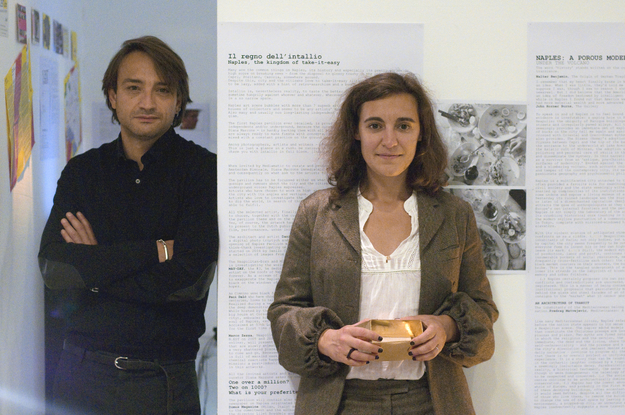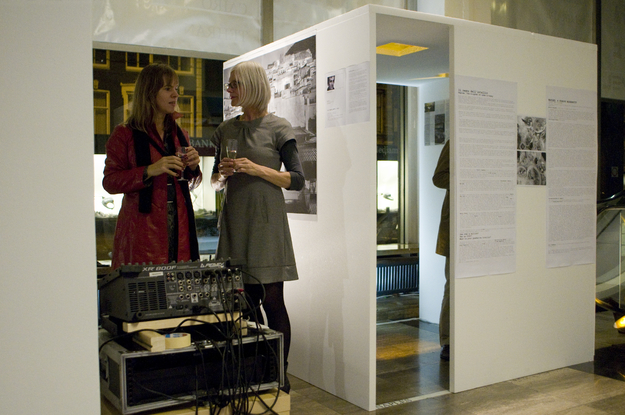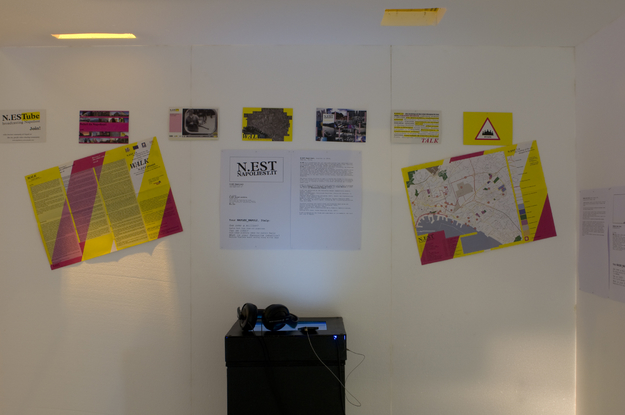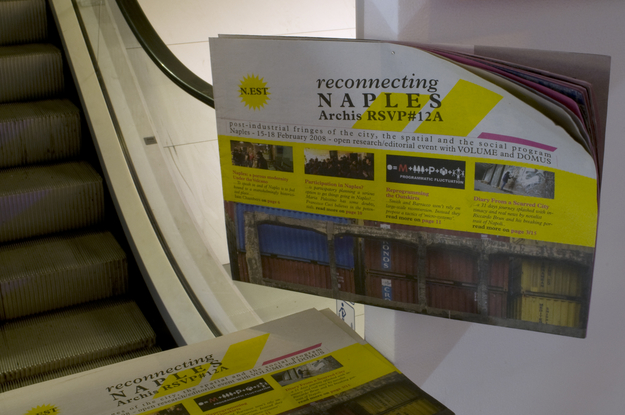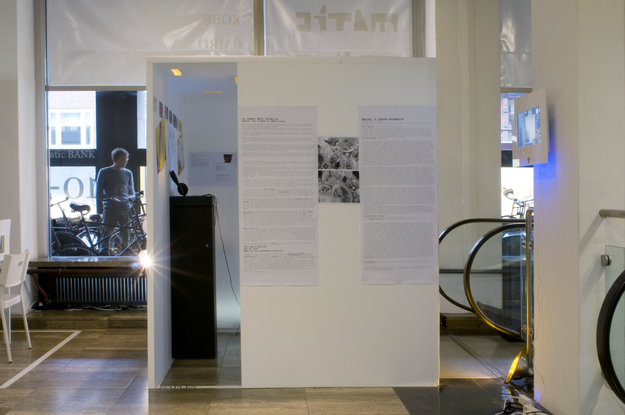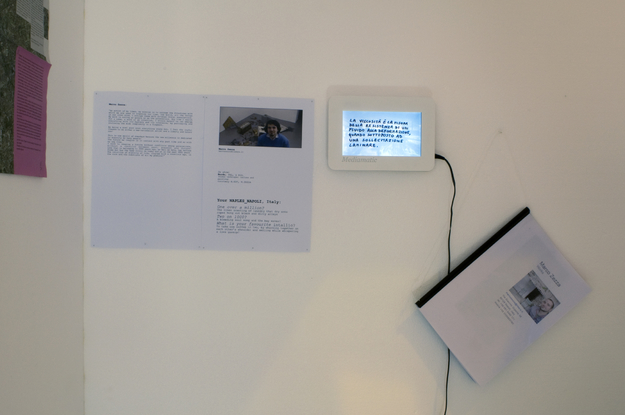_
Il regno dell’intallio || Naples, the kingdom of take-it-easy
Many are the common things on Naples, its history and especially its pretty worldwide high score on breaking news – from the disposal to glossy trashy on the infinite neighbours: Capri, Positano, Casoria, somewhere around.
Despite this, city and the citizens love to take-it-easy (intalliarsi). It is not just to be lazy, added with a hint of retro-anarchism and a bunch of hyper-bourgeoised egos.
Intallio is, nevertheless reality, to taste the better of life: slowly, romantically, sometime hungrily against whoever and whatever. Wherever ‘cause the volcanic over-population in a so narrow space.
Naples art scene bubbles with more than 7 superb art galleries, four main museums and houses of collectors and seems to be any artists’ most preferred city over centuries. Also many and usually non long-lasting independent projects come and go in the furious glam.
The first Naples pavilion ever recalled, is proud to welcome you more on the side of the independents and/or underground, because the curator – the Italian journalist and producer Diana Marrone - is hardly backing them with all her love and enthusiasms. Those independents are always ready to make fiesta with concepts, social issues, geo-referenced projects mixed with a constant practice on the ground and abroad.
Among photographers, artists and writers - plenty are the ones could embed the kingdom.
This is just a glance in a rush: be curious to know it better. Every day of a year could charm you with Intallio in full bloom. [Intallio is a word from Neapolitan dialect].
When the curiosity killed the cat:
the artists invited to represent Naples at the first Amsterdam Biennale are: Danilo Capasso, Alessandro Cimmino, N.EST (www.napoliest.it); Roberto Paci Dalò, Marco Zezza
When invited by Mediamatic to curate and produce the first Naples Pavilion at the first Amsterdam Biennale, the Italian journalist Diana Marrone immediately decided on the sense of her participation and consequently on what ask to the artists to select.
The pavilion has to be focussed either on what Naples is now - despite all the worldwide gossips and rumours about the city and the citizens’ aptitudes – and on the most interesting underground voices Naples expresses.
Artists who have chosen to work on high and not banal poetics that are fully embracing the city with its angles and vertigos. Artists who do not close themselves in boundaries. Artists who love to investigate the limits of the Neapolitan life, without forgetting to dig the world, in search of those little quantities of peace the city itself is not able to fulfil.
All the selected artist, finally, have been requested to work on Intallio concept and to choose, together with the curator, an artwork able to answer to the expectations on the Pavilion theme and on the nature of the city at the same time.
Yes, of course, the artwork has to be representative of their artistic languages, in order to present to the Dutch public some of the most interesting new trends in photography, film, performances, urban initiatives, visual arts made in Naples.
The architect and artist Danilo Capasso works on the visual expression of latency with a digital photo triptych and will perform an audiovisual set on October 10th, at the opening of Naples Pavilion with a “best of” N.EST project, an online database and offline think-thank investigating on urban regeneration through the eyes of artists. N.EST project, started on 2004 by Danilo Capasso and some colleagues (included the Pavilion curator Diana Marrone, who is N.EST editor and fundraiser), will be part of the exhibit with a selection of video contributions and some images by the involved artists.
The Neapolitan-born and Milan based architect and photographer Alessandro Cimmino who is investigating the world landscape, will present a stunning image of his collection MAY-DAY, the #3, he dedicated to Naples: a long-exposure analogical photo made by the artist on the roofs of Naples on 2007 and printed on long-lasting paper able to be collected forever. As a scream of pain for the un-happy destiny of the city, the artist is willing to exaggerate the Naples proverbial negativity by post-producing the image and adding black on the windows of the portrayed houses: his last act to decree the death of the hopes.
As Cimmino uses black for its own sake of despair, the multimedia artist and composer Roberto Paci Dalò who have chosen Naples as his elective city as many artists do and did in the past centuries, loves to tell exactly the contrary with his full black in the movie Dust.
Realized during a very prolonged black-out happened in Italy on 27 Sept. 2003, Dust is the deep demonstration of how Naples can cause hate and love in very extreme tastes.
While hosted by the Neapolitan artist Oreste Zevola, Paci Dalò, feeling too alone in a big house at Corso Vittorio Emanuele (a long street cutting in half the main hill of the city), embraces his camera and wander out in the night - excited to penetrate an unusual soul of Naples, excited to breath the pure black and silent city. Acclaimed at 57th Locarno Film Festival, the movie will be screened into Naples Pavilion, for the first time in Amsterdam, during all days of the show.
Marco Zezza, Neapolitan artist, performer and screen designer born on 1974, who joined N.EST on 2005 and 2008 with two different interventions (both first offline and after online), will present Bordo a video made by subtle and beautiful pictorial interventions that are slowly animated, as in stop motion, by the artist. Bordo tells the history of a very shattered place, Via Brin, on East Naples, where many tourists and residents use to come and go, because there is an huge parking lot and bus station. The street is full of prostitutes and gays who seek for sex. The artist is depicting the physical and chemical reactions happening during sex in order to describe the actual Via Brin main mission: a post-industrial love district. He enjoy as well his deep theatrical aptitude in this artworks.
All the invited artists and also N.EST collective project will answer to 3 questions the curator Diana Marrone asked to them on Naples (their answers will be printed on the pavilion walls):
One over a million?
Two on 1000?
What is your preferite Intallio?
Their answers, together with statements or books or info on their creations, will help the visitors to meet better the poetics of the artists and of the city itself.
The pavilion will contain also a number of copies of “Reconnecting Naples” a special newspaper on Naples originated by a joint research of Volume Magazine (Amsterdam); Domus Magazine (Milan, Italy); N.EST (www.napoliest.it) managed and fundraised by Diana Marrone (who was also the editor at large), thanks to the commitment and the enthusiasm of Volume, with the editor in chief Arjen Oosterman, the director Lilet Breddels and the editor Christian Ernsten.
The magazine has been discussed and planned in occasion of the show “N.EST the making of the city” held on February 2008 at MADRE Museum, Naples and in East suburbs of the city. 30 journalists, architects, designers, photographers, social scientists from 26 to 73 years old, all born in Naples or adopted by the loose womb of the city, answered to a RSVP invitation made by Volume and wrote a newspaper from the bottom, from the rooms of a visual art museum, from the streets of the industrial East suburbs.
The tabloid has been read from Kabul to Helsinki, from Washington to Beijing, from Kiwi land to NY. Read it to understand the city.
Read more about the artists here, or contact them through:
www.pressreleaseundercover.com
prundercover@gmail.com
Read more about the Italian contributions to the Amsterdam Biennale in the newsletter of Art Portal Exibart
